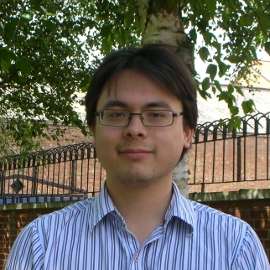It’s all about puppets at the moment, from War Horse to Madama Butterfly – even Studio Ghibli’s complicated cult film Princess Mononoke has had the puppet treatment – and the latest musical project to do the string thing, so to speak, is from the London Sinfonietta. At the World’s Edge is a collaborative piece with its origins in the Sinfonietta’s Blue Touch Paper scheme, which promotes interdisciplinary collaboration between artists in various media. Composer Elspeth Brooke, writer and director Seonaid Goody, and puppeteer Andrea Sadler have created a new work telling the story of Persephone, and this Spitalfields Music Summer Festival performance at Village Underground was the piece’s London première. It’s enchanting, even if its highly collaborative nature isn’t always to its benefit.
The young Persephone and her mother Demeter are both slightly melancholy-looking wooden puppets, happily playing hide and seek in some long grass – located at the world’s edge – when Persephone vanishes from sight. She descends to the Underworld, which in this realisation is a dark realm filled with curious, abstract shapes, and through eating its fruit she becomes obliged to stay there. Demeter, meanwhile, has been searching the whole earth for her daughter, and though she finds her eventually, only a partial reunion is possible.
What was most impressive about At the World’s Edge was how deeply the collaboration seemed to go. The trio of musicians – Andrew Webster (clarinet), Joely Koos (cello) and Helen Tunstall (harp) – were intimately involved in the action, pitching in narration and puppetwork, and their music was tied to the story in a way that went beyond the merely illustrative. The puppets, meanwhile, were deftly handled, and especially elegant were the moments of interaction between them and the musicians – Persephone even played the harp at one point. Sound projection by Jonathan Green of Sound Intermedia added much to the aural backdrop, and all the visuals, including Hansjörg Schmidt’s lighting, were beautiful (even if the vision of the Underworld didn’t say “hell” so much as “geometry”).
With all the constituent parts so tightly tied to the storytelling, though, the piece didn’t do much beyond recounting the myth; despite its plethora of authors, there was only one perspective presented. I missed a sense of dialogue between the various different media – it was all slightly too harmonious.
At the World’s Edge was prefaced by two shorter instrumental numbers: a couple of intricate extracts from R. Murray Schafer’s The Crown of Ariadne for solo harp, attractively played by Tunstall, and Shadow Realm by Simon Holt, for all three of the players. Both of these dark, elegant works were ideal preparations for what followed – and equally ideal, in fact, was the cavernous space offered by Village Underground, which added much to the eerie, subtly sinister air. An atmospheric evening, then, but not the most provocative.


